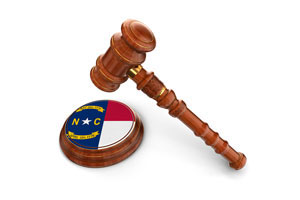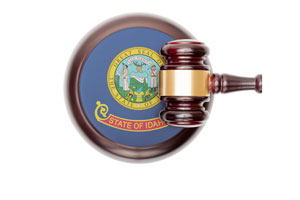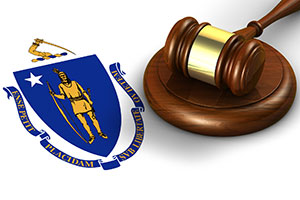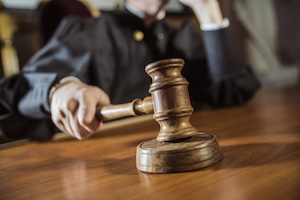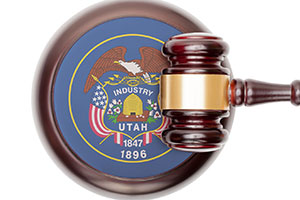The North Carolina Court of Appeals faulted an attorney for challenging a decision to admit expert testimony without relying on the North Carolina Rules of Evidence. A doubtful experiment in shell casing ejection by a prosecution expert was deemed admissible because the defense attorney failed to challenge the admissibility of the experiment under Daubert.
Facts of the Case
John Turner shot Nicholas Parker. The two neighbors had a quarrelsome history. They had heated disputes about the location of their property boundary, among other issues.
Turner testified that a stray dog had been causing problems in the neighborhood. Turner said he had tried, without success, to get the dog under control.
Turner testified that he heard gunshots coming from Parker’s property. He then saw that the stray dog was injured. Believing that Parker had shot the dog, Turner armed himself with a handgun. Turner then walked down the road to find the dog.
Turner saw the dog at about the time he encountered Parker. Turner chambered a round in his gun, apparently to ready himself to end the dog’s suffering. He discovered, however, that the dog had already died.
According to Turner, Parker was enraged. Turner testified that Parker said that he shot the dog and would shoot Turner too. Turner also testified that Parker said he had been “waiting for this” and that they would “get this over with.”
Turner testified that he saw Parker reach for his waist. Assuming that Parker had a weapon in his waistband, Turner shot him. Turner testified that he was “stumbling backward” when he fired the shots. Turner then called 911 to request medical assistance for Parker.
The medical examiner testified that Parker was shot eleven or twelve times. All but two of the bullets entered Parker’s back.
Turner argued that he acted in self-defense. Even if Parker had no gun, a mistaken belief that the facts justify killing another person in self-defense could result in a conviction for the lesser crime of voluntary manslaughter under North Carolina law.
The jury found Turner guilty of murder. The jury also found Turner guilty of possessing a firearm as a felon.
Expert Testimony
Investigators discovered eight shells at the crime scene that had been ejected from Turner’s gun. The shells were in a straight line and at various distances from each other.
Kelby Glass, a forensic firearms examiner employed by the sheriff’s department, testified over objection as an expert witness for the prosecution. Glass conducted an experiment to determine the direction and distance that shells would travel after being ejected from Turner’s gun.
Glass testified that when he fired the gun while it was parallel to the ground, the ejected casings traveled backward and to the right for about eight or nine feet. When he angled the gun downward, the ejected casings traveled forward and to the right for about nine to eleven feet.
Glass offered no opinion about Turner’s location or movement when he fired the gun. Given the location of the shell casings, the prosecutor argued that Glass’ experiment disproved Turner’s testimony that he was stumbling backwards when he shot the gun.
The prosecutor argued that the position of the shell casings proved that Turner was moving toward Parker as he fired the gun. The prosecutor asked the jury to infer that Turner shot Parker in the back after Parker was already on the ground, an inference that is inconsistent with self-defense.
Potential Daubert Challenges to Expert’s Experiment
North Carolina has interpreted its Rules of Evidence in a matter that adopts the Daubert standard. Had Turner based his objection on Daubert, he could have challenged Glass’ testimony on the ground that it was not derived from a reliable methodology. Glass did not claim to have fired the gun while stumbling backwards. In the absence of that data, it is difficult to understand how Glass’ experiment could be said to disprove Turner’s testimony.
There is no suggestion in the appellate decision that Glass based his experiment on a peer-reviewed methodology. At least one forensic study concluded that a variety of factors can affect shell casing ejection patterns, including how the shooter gripped the gun. Two different people standing in the same location and holding the same gun at the same angle can produce significantly different ejection patters. That information, if placed before the court, might have convinced the judge that Glass’ experiment was incapable of returning meaningful results.
Moreover, Glass did not interpret his experimental results. The prosecutor, who certainly isn’t a forensic expert, provided an interpretation during closing argument. One wonders how an expert’s testimony about experimental results that fails to recreate the circumstances of the shooting and that is not accompanied by interpretative analysis was relevant. One might also wonder how a prosecutor with no scientific credentials at all was permitted to express opinions about the meaning of an experiment that the expert who conducted it failed to articulate.
Court’s Analysis of Turner’s Challenge
How the court might have analyzed a Daubert challenge is unknown because Turner did not make one. Instead, he relied on an older line of North Carolina cases that he viewed as more favorable to his position. While those cases, which ask whether the challenged experiment was “substantially similar” to the facts of the case, raise questions that are relevant to a Daubert analysis, they do not reflect the totality of the Daubert standard.
The court of appeals concluded that the “substantial similarity” of an experiment is no longer a standalone test in North Carolina. Rather, the Daubert analysis asks whether the expert’s opinion is based on sufficient facts or data, was the product of reliable principles and methods, and derived from a reliable application of those methods to the facts.
A strong challenge to each of those prongs could have been advanced. Turner could doubtless have found a forensic expert of his own to challenge the reliability of Glass’ methodology and the adequacy of the data that his experiment produced. He could also have challenged the relevance of an experiment that the expert witness fails to interpret. Since he didn’t, the court rejected his argument because it was based on precedent that is no longer controlling.
Lessons Learned
Although Turner did not mention the Daubert standard on appeal, the appellate court noted that it would “readily conclude” that the trial court would not have abused its discretion if it had applied the Daubert standard. On the record before the court, that observation might have merit. However, Turner’s counsel didn’t make a record that would allow the court to apply Daubert in a meaningful way.
The appellate court recognized that Glass didn’t know how Turner was gripping the gun and that Glass and Turner were standing on different surfaces when Glass conducted his test. However, Glass testified that those differences weren’t important. That was good enough for the appellate court to conclude that a Daubert challenge would have failed.
Turner could have challenged Glass’ opinion by calling his own forensic expert. The court might have come to a different conclusion after learning that research undermines Glass’ confidence that his failure to consider important variables did not influence his findings. It is difficult to understand how Glass’ experiment could have survived a Daubert analysis if an expert, relying on peer-reviewed studies, had pointed out the obvious flaws in Glass’ methodology.
There are two lessons to learn from Turner’s case. First, in a Daubert state, objections to the admissibility of expert evidence should be framed in terms of the Daubert standard. Second, when the prosecution wants to introduce an expert witness, the defense should always investigate the possibility of calling its own expert to elucidate flaws in the prosecution expert’s methodology.


